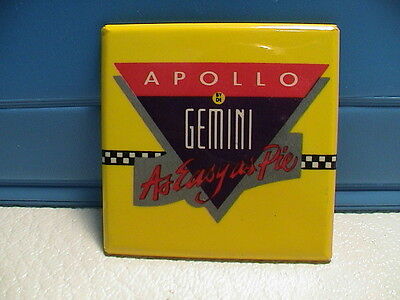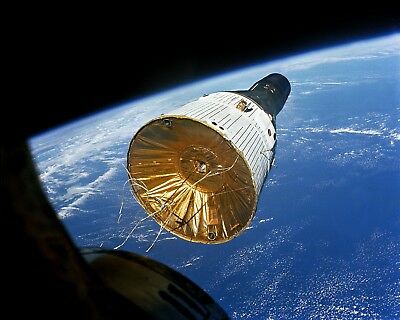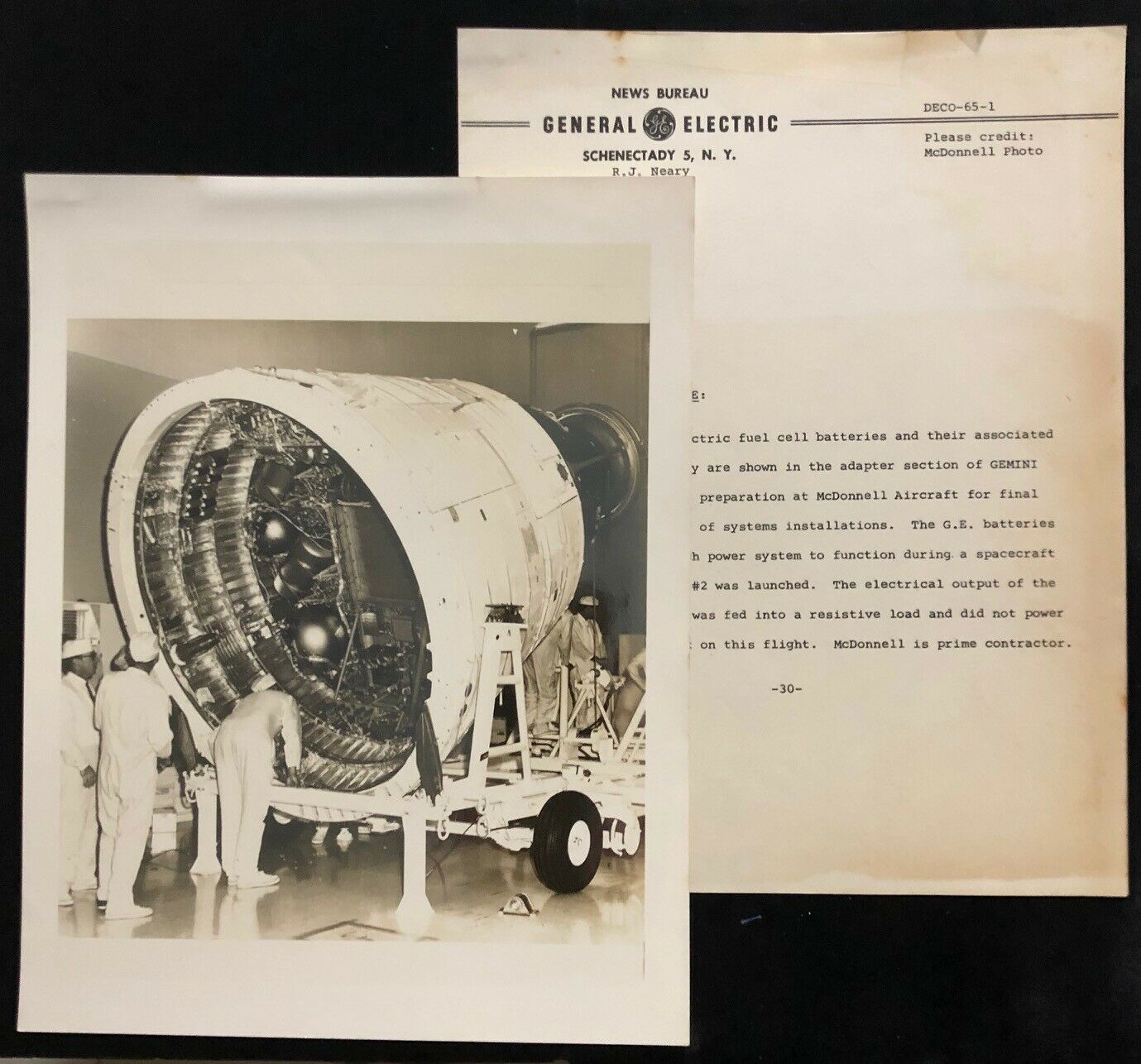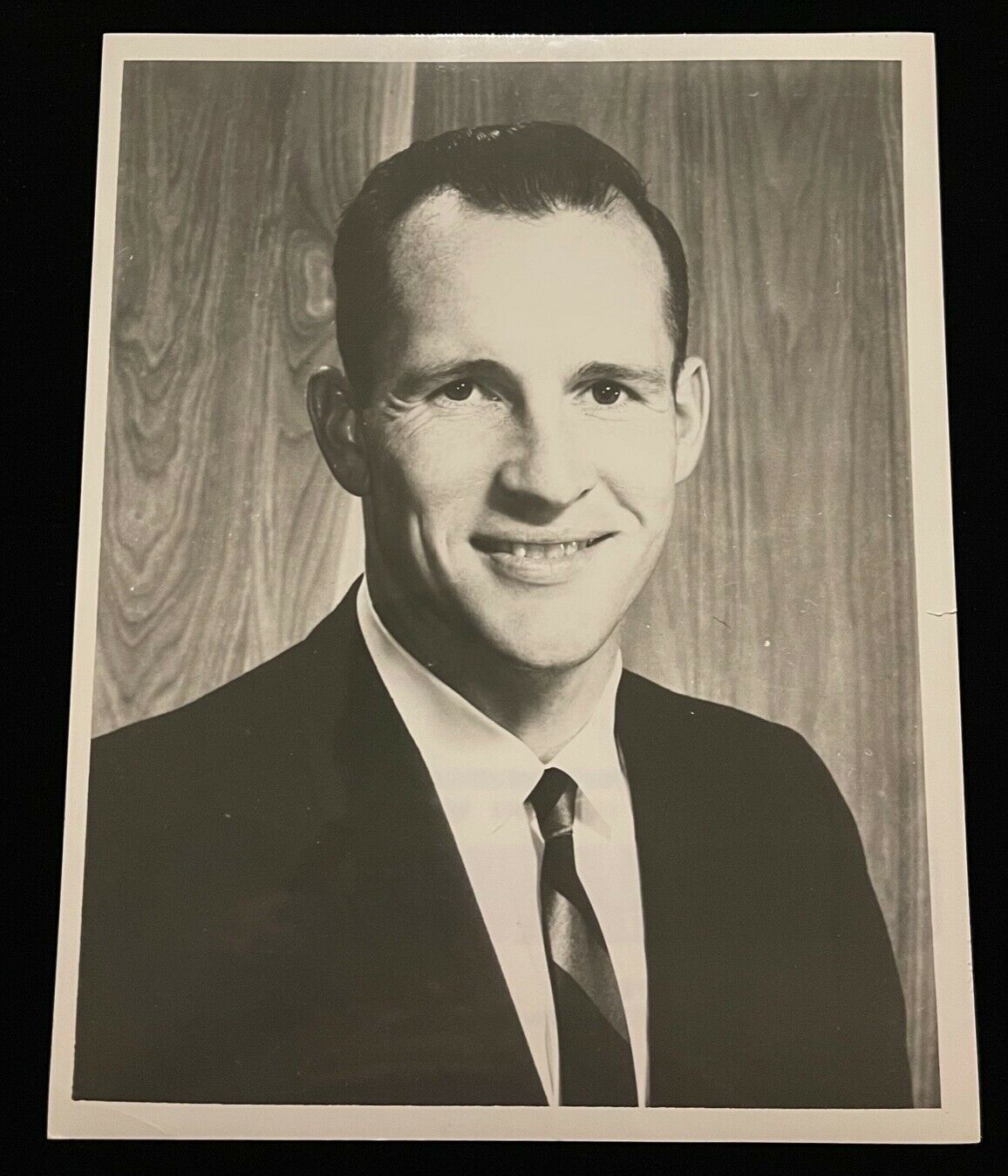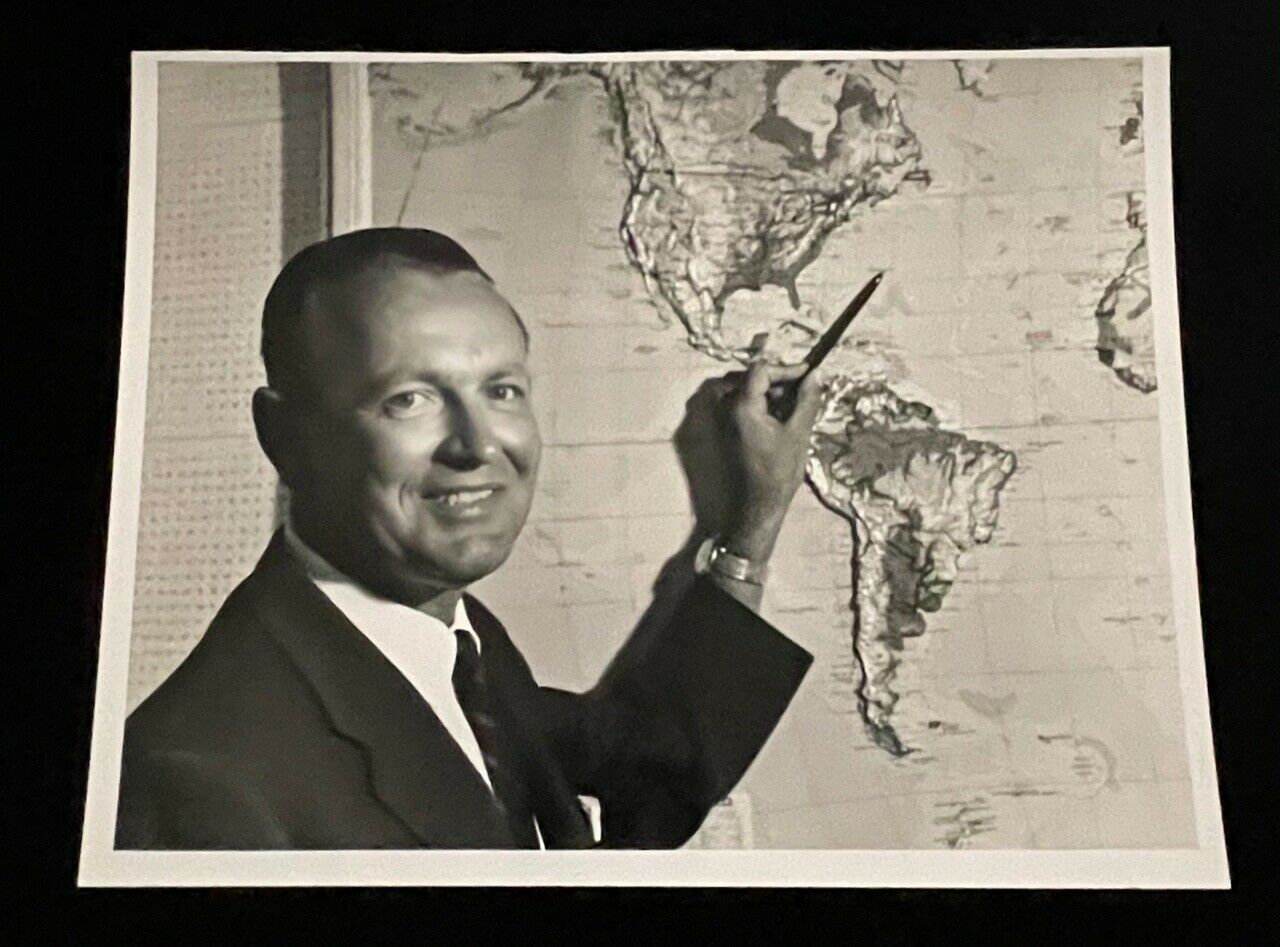-40%
APOLLO BY DE GEMINI AS EASY AS PIE SPACE TRAVEL MISSION TO LUNAR MOON PINBACK
$ 6.59
- Description
- Size Guide
Description
This auction is for a used but good condition pinback that says APOLLO BY DE GEMINI AS EASY AS PIE. The button shows a logo of what I believe is the Apollo Gemini capsule. The heat shild glass was made of Pyrex like the oven baking Pyrex pie plate glassware. The front has some surface age scratch wear and about four small dings. The back of the pin is in excellent shape and has a safety pin that locks into position. The badge measures about 2 1/8" square. THIS PIN IS SOLD ONLY AS A COLLECTIBLE OR FOR PERSONAL USE AND NOT FOR REPRODUCTION! Here is some history of the Apollo Gemini missions:Project Gemini
was the second
human spaceflight
program of
NASA
, the civilian space agency of the
United States
government. Project Gemini was conducted between projects
Mercury
and
Apollo
, with ten manned flights occurring in 1965 and 1966.
Its objective was to develop space travel techniques in support of Apollo, which had the goal of
landing men on the Moon
. Gemini achieved missions long enough for a trip to the
Moon
and back, perfected
extra-vehicular activity
(working outside a spacecraft), and
orbital maneuvers
necessary to achieve
rendezvous and docking
. All manned Gemini flights were launched from
Cape Canaveral
, Florida using the
Titan II
Gemini
launch vehicle
("GLV").
[
1
]
Program objectives
After the existing
Apollo program
was chartered by
President John F. Kennedy
on May 25, 1961 to land men on the Moon, it became evident to NASA officials that a follow-on to the
Mercury
program was required to develop certain spaceflight capabilities in support of Apollo. Originally introduced on December 7 as
Mercury Mark II
, it was re-christened
Project Gemini
on January 3, 1962, from the fact that the spacecraft would hold two crewmen, seated abreast, as
gemini
in Latin means "twins" or "side-by-side".
Gemini
is also the name of the third constellation of the
Zodiac
and its twin stars,
Castor
and
Pollux
.
The major objectives were:
[
2
]
To demonstrate endurance of humans and equipment to spaceflight for extended periods, at least eight days required for a Moon landing, to a maximum of two weeks
To effect
rendezvous and docking
with another vehicle, and to maneuver the combined spacecraft using the propulsion system of the target vehicle
To demonstrate
Extra-Vehicular Activity
(EVA), or space-"walks" outside the protection of the spacecraft, and to evaluate the astronauts' ability to perform tasks there
To perfect techniques of atmospheric reentry and landing at a pre-selected location
To provide the astronauts with zero-gravity, rendezvous, and docking experience required for Apollo
[
edit
]
Team
Gemini was designed by a Canadian,
Jim Chamberlin
, formerly the chief
aerodynamicist
on the
Avro Arrow
fighter interceptor program with Avro Canada. Chamberlin joined NASA along with 25 senior Avro engineers after cancellation of the Arrow program, and became head of the U.S. Space Task Group’s engineering division in charge of Gemini. The prime contractor was
McDonnell Aircraft
, which had also been the prime contractor for the
Project Mercury
capsule.
In addition,
astronaut
Gus Grissom
was heavily involved in the development and design of the
Gemini spacecraft
. (The other Mercury astronauts dubbed the Gemini spacecraft the "Gusmobile".
[
3
]
) He writes in his posthumous 1968 book
Gemini!
that the realization of
Project Mercury
's end and the unlikelihood of his having another flight in that program prompted him to focus all of his efforts on the upcoming Gemini Program.
The Gemini program was managed by the Manned Spacecraft Center,
Houston, Texas
, under direction of the Office of Manned Space Flight,
NASA
Headquarters, Washington, D.C. Dr.
George E. Mueller
, Associate Administrator of NASA for Manned Space Flight, served as acting director of the Gemini program. William C. Schneider, Deputy Director of Manned Space Flight for Mission Operations, served as mission director on all Gemini flights beginning with Gemini VI.
Guenther Wendt
was a McDonnell engineer who supervised launch preparations for both the Mercury and Gemini programs and would go on to do the same for the manned section of the Apollo program. His team was responsible for completion of the complex pad close-out procedures just prior to spacecraft launch, and he was the last person the astronauts would see prior to closing the hatch. The astronauts appreciated his taking absolute authority over, and responsibility for, the condition of the spacecraft and developed a good-humored rapport with him.
[
4
]
[
edit
]
Spacecraft
A cutaway illustration of the Gemini spacecraft
NASA selected
McDonnell Aircraft
, which had been the prime contractor for the
Project Mercury
capsule, to build the Gemini capsule in 1961 and the first capsule was delivered in 1963. The spacecraft was 19 feet long and 10 feet wide with a launch weight of 8,490 pounds. The Gemini capsule first flew with a crew on March 23, 1965.
[
5
]
Unlike Mercury, which was equipped only with an
attitude control
system to change its pitch, yaw, and roll orientation in space, the Gemini spacecraft was equipped with an
Orbit Attitude and Maneuvering System
(OAMS) which also performed
translation
in all three perpendicular axes (forward/backward, left/right, up/down) in addition to attitude control. This was used to alter its
orbital inclination
and altitude, and to perform
rendezvous
and
docking
with the
Agena Target Vehicle
(ATV). The ATV had its own rocket engine which could be used to perform larger altitude changes.
Also unlike Mercury, and the later
Apollo spacecraft
, Gemini's emergency
launch escape system
did not use an escape tower (powered by a
solid-fuel rocket
), but instead used aircraft-style
ejection seats
. The tower was heavy and complicated, and NASA engineers reasoned that they could do away with it as the Titan II's hypergolic propellants would burn immediately on contact, thus a booster explosion would be much smaller than on the cryogenically fueled Atlas and Saturn and ejector seats were sufficient to separate the astronauts from a malfunctioning launch vehicle.
A major difference between the Gemini and Mercury spacecraft design was that all Mercury systems other than the
reentry rockets
were situated within the capsule, most of which were accessed through the astronaut's hatchway. In contrast, Gemini housed power, propulsion, and
life support systems
in a detachable Equipment Module located behind the Reentry Module, which made it similar to the
Apollo Command/Service Module
design. Many components in the capsule itself were reachable through their own small access doors. Unlike Mercury, Gemini used completely solid-state electronics (something the Soviets wouldn't manage for another two decades) and its modular design made it very easy to repair.
Gemini was the first manned spacecraft to include an onboard computer, the Gemini Guidance Computer,
[
6
]
to facilitate management and control of mission maneuvers. Unlike the Mercury, the Gemini used
ejection seats
, in-flight
radar
and an
artificial horizon
—devices similar to those used in the aviation industry.
The original intention for Gemini was to land on solid ground instead of at sea, using a
Rogallo wing
rather than a parachute, with the crew seated upright controlling the forward motion of the craft. To facilitate this, the airfoil did not attach just to the nose of the craft, but to an additional attachment point for balance near the heat shield. This cord was covered by a strip of metal which ran between the twin hatches. This design was ultimately dropped, and parachutes were used to make a sea landing as in
Project Mercury
. The capsule was suspended at an angle closer to horizontal, so that a side of the heat shield contacted the water first. This eliminated the need for the landing bag cushion used in the Mercury capsule.
Early short-duration missions had their electrical power supplied by batteries; later endurance missions used the first
fuel cells
in manned spacecraft.
Gemini was in some regards more advanced than Apollo because the latter program began two years earlier. It became known as a "pilot's spacecraft" due to its assortment of jet fighter-like features, in no small part due to Gus Grissom's influence over the design, and it was at this point where the American manned space program clearly began showing its superiority over the Soviet Union. The latter during this period were developing the
Soyuz
spacecraft that was intended to take cosmonauts to the Moon, but political and technical problems began to get in the way, leading to the ultimate disastrous end of their manned lunar program.
[
edit
]
Launch vehicle
Main article:
Titan II GLV
The
Titan II
had debuted in 1962 as the Air Force's second-generation ICBM to replace the Atlas. By using hypergolic fuels, it could be stored for long periods of time and be easily readied for launch in addition to being a simpler design with fewer components, the only caveat being that the propellant mix (
nitrogen tetroxide
and
hydrazine
) was extremely toxic compared to the Atlas's liquid oxygen/RP-1. However, the Titan had considerable difficulty being man-rated due to early problems with
pogo oscillation
.
The Titan II rocket that carried the Gemini spacecraft was guided by its own (separate)
ASC-15
guidance computer. The Gemini Guidance Computer, sometimes called the Gemini Spacecraft On-Board Computer (OBC), was very similar to the
Saturn Launch Vehicle Digital Computer
. The Gemini Guidance Computer weighed 58.98 pounds (26.75 kg). The
core memory
had 4096 addresses, each containing a
39-bit
word, composed of three
13-bit
"syllables". All numeric data was
26-bit
2's complement integers (sometimes used as
fixed-point numbers
), either stored in the first two syllables of a word or in the accumulator. Instructions (always 4 bit opcode and 9 bits of operand) could go in any syllable.
[
7
]
[
8
]
[
9
]
[
10
]
[
edit
]
Astronauts
Sixteen astronauts flew on 10 manned Gemini missions:
Group
Astronaut
Service
Mission, crew position
Astronaut Group 1
(
Project Mercury
veterans)
L. Gordon Cooper
USAF
Gemini 5
Command pilot
Virgil "Gus" Grissom
Gemini 3
Command pilot
Walter M. Schirra
USN
Gemini 6A
Command pilot
Astronaut Group 2
Neil A. Armstrong
Civilian
Gemini 8
Command pilot
Frank Borman
USAF
Gemini 7
Command pilot
Charles "Pete" Conrad
USN
Gemini 5
Pilot
Gemini 11
Command pilot
James A. Lovell
USN
Gemini 7
Pilot
Gemini 12
Command pilot
James A. McDivitt
USAF
Gemini 4
Command pilot
Thomas P. Stafford
Gemini 6A
Pilot
Gemini 9
Command pilot
Edward H. White II
Gemini 4
Pilot
John W. Young
USN
Gemini 3
Pilot
Gemini 10
Command pilot
Astronaut Group 3
Edwin "Buzz" Aldrin
USAF
Gemini 12
Pilot
Eugene A. Cernan
USN
Gemini 9
Pilot
Michael Collins
USAF
Gemini 10
Pilot
Richard F. Gordon
USN
Gemini 11
Pilot
David R. Scott
USAF
Gemini 8
Pilot
[
edit
]
Crew selection
Edward White during spacewalk, Gemini 4, June 1965
Deke Slayton
, as director of flight crew operations, had the main role in the choice of crews for the Gemini program. With Gemini it became a procedure that each flight had a primary crew and backup crew, and that the backup crew would rotate to primary crew status three flights later. Slayton also intended for first choice of mission commands to be given to the four remaining active astronauts of the
Mercury Seven
:
Alan Shepard
, Grissom, Cooper, and Schirra. (
John Glenn
had retired from NASA in January 1964 and
Scott Carpenter
, who was blamed by some in NASA management for the problematic reentry of
Aurora 7
, was on leave to participate in the Navy's
SEALAB
project and was grounded from flight in July 1964 due to an arm injury sustained in a motorbike accident. Slayton himself continued to be grounded due to a heart problem.)
In late 1963, Slayton selected Shepard and
Stafford
for Gemini 3,
McDivitt
and
White
for Gemini 4, and Schirra and
Young
for Gemini 5 (which was to be the first Agena rendezvous mission). Backup crew for Gemini 3 was Grissom and
Borman
, who were also slated for
Gemini 6
, to be the first long-duration mission. Finally
Conrad
and
Lovell
were assigned as backup crew for
Gemini 4
.
Rendezvous of Gemini 6 and 7, December 1965
Delays in the production of the Agena target vehicle caused the first rearrangement of the crew rotation. The Schirra and Young mission was bumped to Gemini 6 and they now were the backup crew for Shepard and Stafford. Grissom and Borman now had their long-duration mission assigned to Gemini 5.
The second rearrangement occurred when Shepard developed
Ménière's disease
, an inner ear problem. Grissom was then moved to command Gemini 3. Slayton felt that Young was a better personality match with Grissom and switched Stafford and Young. Finally, Slayton tapped Cooper to command the long-duration Gemini 5. Again for reasons of compatibility, he moved Conrad from backup commander of Gemini 4 to pilot of Gemini 5, and Borman to backup command of Gemini 4. Finally he assigned
Armstrong
and
See
to be the backup crew for Gemini 5.
First docking; Agena target is seen from Gemini 8, March 1966
The third rearrangement of crew assignment occurred when Slayton felt that See wasn't up to the physical demands of EVA on Gemini 8. He reassigned See to be the prime commander of Gemini 9 and put
Scott
as pilot of Gemini 8 and
Bassett
as the pilot of Gemini 9.
The fourth and final rearrangement of the Gemini crew assignment occurred after the deaths of See and Bassett when their trainer jet crashed, ironically into a McDonnell building which held their Gemini 9 capsule in St. Louis. The backup crew of Stafford and
Cernan
was then moved up to the new prime crew of the re-designated Gemini 9A. Lovell and
Aldrin
were moved from being the backup crew of Gemini 10 to be the backup crew of Gemini 9. This cleared the way through the crew rotation for Lovell and Aldrin to become the prime crew of Gemini 12.
Along with the deaths of Grissom, White, and
Chaffee
in the fire of
Apollo 1
, this final arrangement helped determine the makeup of the first seven Apollo crews, and who would be in position for a chance to be the first to walk on the Moon.
[
edit
]
Missions
Gemini Mission Control in Houston during Gemini 5
There were 2 unmanned Gemini flights in 1964 and 1965, followed by 10 manned flights in 1965 and 1966. All were launched by
Titan II
launch vehicles. Highlights of the Gemini program achieved its objectives in support of the
Apollo program
:
Edward H. White
became the first American to make an
extravehicular activity
(EVA, or "space walk"), on June 3, 1965 during
Gemini 4
.
Gemini 5
demonstrated the 8-day endurance necessary for the Apollo lunar mission with the first use of
fuel cells
to generate its electrical power.
Gemini 6A
and
7
accomplished the first
space rendezvous
in December 1965, and Gemini 7 set a 14-day endurance record.
Gemini 8
achieved the first space docking with an unmanned
Agena target vehicle
.
Gemini 11
set a manned Earth orbital altitude record of 739.2 nautical miles (1,369.0 km) in September 1966, using the propulsion system of its Agena target vehicle. This record still stands as of 2011.
[
11
]
Edwin "Buzz" Aldrin
on
Gemini 12
became the first space traveller to prove that useful work could be done outside the spacecraft without life-threatening exhaustion.
Rendezvous in orbit is not a straightforward maneuver. Should a spacecraft increase its speed to catch up with another, the result would be that it is going to a higher and slower orbit and the distance thereby increases. The right procedure would actually be to slow down and go to a lower orbit first and then later to increase speed and go to the same orbit as the other.
[
12
]
To practice these maneuvers special rendezvous and docking simulators were built for the astronauts.
[
13
]
[
edit
]
List of missions
Unmanned events
Mission
LV
Serial N
o
Mission Dates
Launch Time
Duration
Remarks
Gemini 1
GLV-1 12556
8–12 April 1964
16:01
UTC
03d 23h
First test flight of Gemini
Gemini 2
GLV-2 12557
19 January 1965
14:03 UTC
00d 00h 18m 16s
Suborbital flight
to test heat shield
Manned events
Mission
LV
Serial N
o
Command Pilot
Pilot
Mission Dates
Launch Time
Duration
Gemini III
GLV-3 12558
Grissom
Young
23 March 1965
14:24 UTC
00d 04h 52m 31s
First manned Gemini flight, three orbits.
Gemini IV
GLV-4 12559
McDivitt
White
3–7 June 1965
15:15 UTC
04d 01h 56m 12s
Included first
extravehicular activity
(EVA) by an American; White's "space walk" was a 22 minute EVA exercise.
Gemini V
GLV-5 12560
Cooper
Conrad
21–29 August 1965
13:59 UTC
07d 22h 55m 14s
First week-long flight; first use of fuel cells for electrical power; evaluated guidance and navigation system for future rendezvous missions. Completed 120 orbits.
Gemini VII
GLV-7 12562
Borman
Lovell
4–18 December 1965
19:30 UTC
13d 18h 35m 01s
When the original Gemini VI mission was scrubbed because its Agena target for rendezvous and docking failed, Gemini VII was used for the rendezvous instead. Primary objective was to determine whether humans could live in space for 14 days.
Gemini VI-A
GLV-6 12561
Schirra
Stafford
15–16 December 1965
13:37 UTC
01d 01h 51m 24s
First space rendezvous accomplished with Gemini VII, station-keeping for over five hours at distances from 0.3 to 90 m (1 to 300 ft).
Gemini VIII
GLV-8 12563
Armstrong
Scott
16–17 March 1966
16:41 UTC
00d 10h 41m 26s
Accomplished first docking with another space vehicle, an unmanned Agena stage. While docked, a Gemini spacecraft thruster malfunction caused near-fatal tumbling of the craft, which, after undocking, Armstrong was able to overcome; the crew effected the first emergency landing of a manned U.S. space mission.
Gemini IX-A
GLV-9 12564
Stafford
Cernan
3–6 June 1966
13:39 UTC
03d 00h 21m 50s
Rescheduled from May to rendezvous and dock with augmented target docking adapter (ATDA) after original Agena target vehicle failed to orbit. ATDA shroud did not completely separate, making docking impossible. Three different types of rendezvous, two hours of EVA, and 44 orbits were completed.
Gemini X
GLV-10 12565
Young
Collins
18–21 July 1966
22:20 UTC
02d 22h 46m 39s
First use of Agena target vehicle's propulsion systems. Spacecraft also rendezvoused with Gemini VIII target vehicle. Collins had 49 minutes of EVA standing in the hatch and 39 minutes of EVA to retrieve experiment from Agena stage. 43 orbits completed.
Gemini XI
GLV-11 12566
Conrad
Gordon
12–15 September 1966
14:42 UTC
02d 23h 17m 08s
Gemini record altitude with
apogee
of 739.2 nautical miles (1,369.0 km)
[
14
]
reached using Agena propulsion system after first orbit rendezvous and docking. Gordon made 33-minute EVA and two-hour standup EVA. 44 orbits.
Gemini XII
GLV-12 12567
Lovell
Aldrin
11–15 November 1966
20:46 UTC
03d 22h 34m 31s
Final Gemini flight. Rendezvoused and docked manually with its target Agena and kept station with it during EVA. Aldrin set an EVA record of 5 hours 30 minutes for one space walk and two stand-up exercises, and demonstrated solutions to previous EVA problems.
This would make a nice addition to an aviation space hobby collection or a gift. Please view my other auctions and ebay store for EMT and fire patches, Pepsi & Masons Shriners belt buckle, Harrahs & Riviera ash trays, animal rights pins, gun patches such as Colt, Remington, Ruger Winchester, Taurus, Smith & Wesson Marlin, High Standard, cigar boxes, movie and rock n roll pins such as Lion King Lightning Hot Club, truck patches & pins, and other collectibles. I will be happy to combine lots to save on shipping. I believe in recycling and will try to ship your item(s)with recycled materials and packages.
U.S.A. Buyers- Free shipping & hanfling!
International Buyers –
International shipping & handling is .00 in US Dollars.
Please Note:
Import duties, taxes and charges are
not included
in the item price or shipping charges. These charges are the buyer’s responsibility. Please check with your country’s customs office to determine what these additional costs will be prior to bidding/buying.” “These charges are normally collected by the delivering freight (shipping) company or when you pick the item up – do not confuse them for additional shipping charges.” “We do not mark merchandise values below value or mark items as ‘gifts’ - US and International government regulations prohibit such behavior.”
All buyers to pay within 5 days of ending date of auction.
I ACCEPT PAYPAL FROM BOTH U.S.A. BUYERS AND INTERNATIONAL BUYERS! Thanks for viewing my auction. Good luck bidding! I WILL NOT SELL TO THE MIDDLE EAST!
